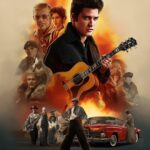
Music biopics — films that portray the lives of famous musicians — have become one of the most successful and emotionally resonant genres in modern cinema. From the dramatic highs of stardom to the personal struggles behind the spotlight, these films draw audiences in with powerful stories set to unforgettable soundtracks. But what is it about the lives of musicians that translates so effectively to the big screen? Why do these films continue to captivate fans, critics, and award shows alike?
The surge in popularity of music biopics over the last two decades is no coincidence. They offer a unique mix of nostalgia, drama, and cultural commentary, and they often introduce iconic music to new generations. As audiences increasingly crave both emotional authenticity and escapism, the music biopic emerges as a genre that delivers both — rooted in real-life passion, triumph, and sometimes tragedy.
A Compelling Blend of Fame and Vulnerability
Musicians often lead lives filled with contrast: global fame alongside private pain, creative genius shadowed by personal demons. This emotional duality creates rich storytelling ground for screenwriters and directors.
In films like Ray (2004) and Walk the Line (2005), the audience witnesses not just the success of Ray Charles and Johnny Cash, but also their struggles with addiction, relationships, and internal conflict. These personal narratives allow viewers to go beyond the headlines and enter the private world of people they thought they knew.
The best biopics don’t just celebrate talent; they humanize it. They show that behind every legendary song is a person grappling with love, fear, ambition, or loss. This blend of glamour and vulnerability makes the stories deeply relatable and emotionally resonant.
The Soundtrack Factor: Music as a Character
Unlike many film genres, music biopics come with a built-in asset — the music itself. Iconic songs are not just background elements; they become characters in their own right. When audiences hear Freddie Mercury belt out “Bohemian Rhapsody” or watch Rami Malek’s recreation of Queen’s Live Aid performance, the emotional impact is amplified by familiarity.
These films often offer reimagined performances, behind-the-scenes studio sessions, or origin stories of beloved tracks. They create new meaning around songs that audiences thought they already understood. In this way, the music adds another layer of emotional power and drives the plot in a way no dialogue ever could.
Cultural Reflection and Historical Context
Music biopics often serve as time capsules, preserving not only the lives of the artists but the cultural landscapes in which they lived. Films like Straight Outta Compton (2015) don’t just focus on N.W.A. as artists — they examine race, police brutality, and free speech during the 1980s in America.
Likewise, Rocketman explores not only Elton John’s rise but also the struggles of a queer man navigating fame during a time when LGBTQ+ identities were largely hidden in popular media. These stories contribute to larger cultural conversations and provide insight into the social and political forces that shaped the artists and their music.
For filmmakers and audiences alike, this deeper context makes the biopic genre more than just entertainment — it becomes a form of cultural storytelling.
Star Power and Awards Appeal
Another element behind the success of music biopics is the opportunity they provide for powerful acting performances. Many actors consider portraying real-life figures, especially musicians, as a career-defining challenge. The roles require vocal training, musical performance, physical transformation, and emotional range.
Think of Jamie Foxx in Ray, Joaquin Phoenix in Walk the Line, or Austin Butler in Elvis (2022). These performances often garner critical acclaim and lead to award nominations and wins. This raises the profile of the film and drives box office interest from both fans of the artist and general moviegoers.
The draw of a strong central performance also helps these films appeal to audiences who may not be hardcore music fans, creating broader demographic reach.
The Appeal of Redemption and Tragedy
Many music biopics follow an emotional arc that audiences find familiar and satisfying: the rise from obscurity, the challenges of fame, the fall or crisis, and ultimately, redemption or legacy. This structure mirrors traditional storytelling models while remaining grounded in real events.
In some cases, the tragedy is unresolved — as in Love & Mercy (2014), which explores Brian Wilson’s mental health battle, or Sid and Nancy (1986), which documents punk icon Sid Vicious’s destructive path. These stories don’t always offer happy endings, but they do offer insight into the cost of creativity and the fragility behind the fame.
This emotional honesty often leaves a lasting impression, encouraging audiences to revisit the artist’s music with new depth and understanding.
New Audiences, New Relevance
One of the lasting impacts of music biopics is how they introduce iconic artists to younger audiences. A teenager might watch Bohemian Rhapsody without knowing much about Queen, only to become a lifelong fan afterward. These films often result in spikes in streaming, vinyl sales, and cultural interest in the artist’s work.
They also help contextualize an artist’s relevance in today’s world. When viewers see how songs were created, what they meant in their time, and why they still resonate, they gain a deeper appreciation for both the music and its creator.
This rediscovery can also revitalize careers. Legacy artists see renewed interest, reissued albums, and even posthumous recognition as younger generations embrace their work.
Challenges and Criticisms
Despite their popularity, music biopics are not without controversy. Critics sometimes point out historical inaccuracies, oversimplification of complex lives, or the romanticizing of troubled behavior. There’s also the question of who controls the narrative — in some cases, films are produced or heavily influenced by the artist or their estate, potentially compromising objectivity.
Nonetheless, audiences tend to approach these films with a mix of curiosity and forgiveness. While they may not capture every fact perfectly, they often succeed in capturing emotional truth — the feeling of what it was like to be that artist, in that moment, creating something that would last forever.
Conclusion
Music biopics continue to thrive because they blend the universal language of music with deeply human stories. They offer audiences a behind-the-scenes look at the people behind the songs they love, while also shedding light on the cultural movements that shaped them.
Whether celebrating resilience, confronting trauma, or simply showcasing the magic of live performance, these films bridge generations and genres, offering something familiar yet profound.
As long as music continues to inspire, and stories continue to move us, the biopic will remain a beloved and powerful form of cinematic storytelling — one that ensures the legends of music live on not only through their recordings, but also on the silver screen.





